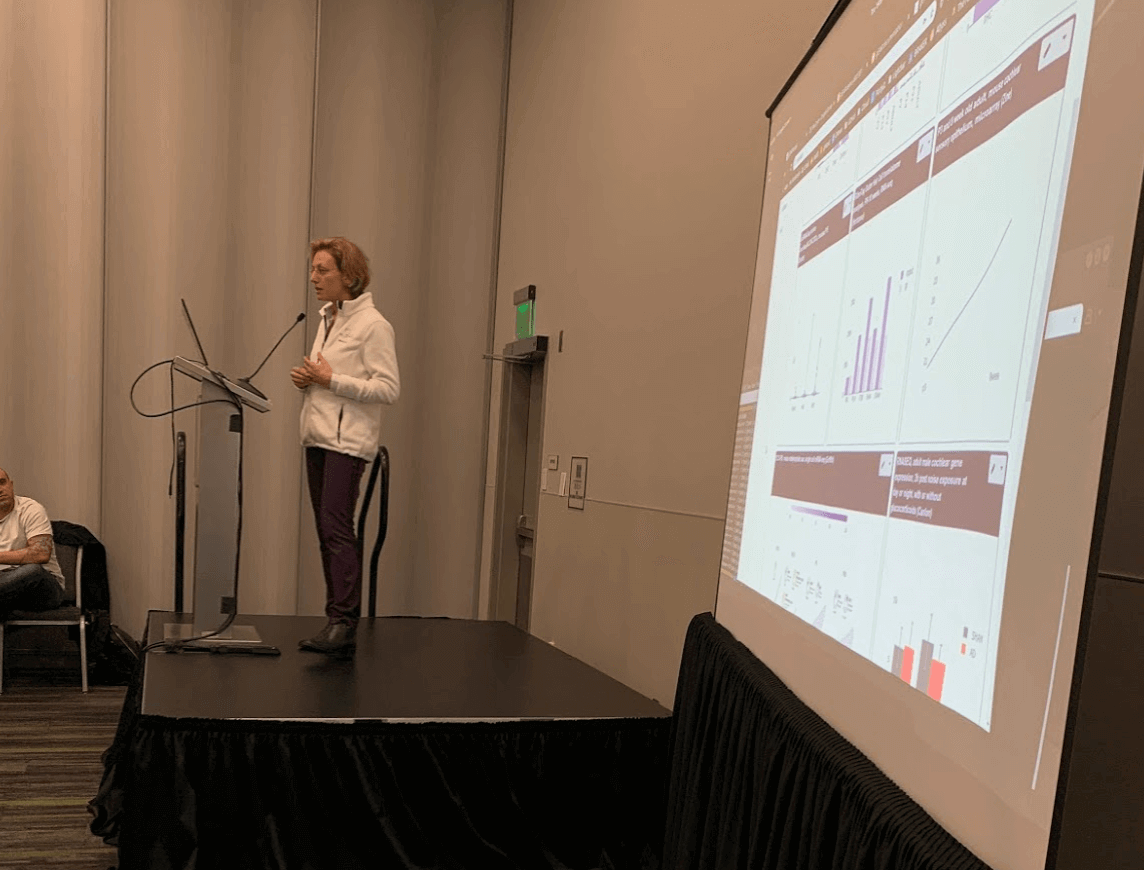By Deborah Kotz
Researchers at the University of Maryland School of Medicine (UMSOM) launched a new online tool that could more quickly advance medical discoveries to reverse progressive hearing loss. The tool enables easy access to genetic and other molecular data from hundreds of technical research studies involving hearing function and the ear. The research portal called gene Expression Analysis Resource (gEAR) was unveiled in a study last month in Nature Methods. It is operated by a group of physician-scientists at the UMSOM Institute for Genome Sciences (IGS) in collaboration with their colleagues at other institutions.
Free Online Tool Helps Researchers Easily Utilize Complex Data from Sophisticated Genetic Studies
The portal allows researchers to rapidly access data and provides easily interpreted visualizations of datasets. Scientists can also input their own data and compare it to other datasets to help determine the significance of their new finding.
“It saves scientists a huge amount of time,” says study corresponding author Ronna Hertzano, M.D., Ph.D., an associate professor of otorhinolaryngology–head & neck surgery at UMSOM and founder of the gEAR. “Instead of relying only on identifying mutations in genes for hearing loss, researchers can easily identify which cells express any gene in the ear, and how this expression changes, for example, as a result of noise exposure or in processes of regeneration in other species.”
Hearing Restoration Project scientist Ronna Hertzano, M.D., Ph.D., delivers a presentation on the usage of the gEAR portal.
Hertzano and team recently added data from the BRAIN initiative to a specialized domain of the gEAR portal to provide access to those performing neuroscience studies to better understand brain function and neurodegenerative diseases like Alzheimer’s. The portal is free and available to any researcher seeking access.
Users of the portal can do a variety of applications depending on their needs. They can access the dataset uploader and add their dataset into gEAR to view their data in a private setting. This enables them to see their findings in the context of other public data before posting their results online or submitting their paper for publication. Once a manuscript is published, a permalink can be included in the manuscript which links readers directly to a curated view of that dataset.
1,200 Registered gEAR Portal Users and 800 Datasets
“The gEAR portal currently includes over 800 datasets, which we carefully reviewed before inputting,” Hertzano says. “We have more than 1,200 registered users and over 80 citations in research studies. We are expecting a large increase now that our methods paper is published.” Hertzano and colleagues did a soft launch of the portal a few years earlier and publicized its existence via discussions with colleagues and user workshops at scientific meetings.
The Hearing Restoration Project (HRP), a research consortium funded by the nonprofit Hearing Health Foundation, provided initial support of the gEAR in an effort to better understand the mystery of hair cell regeneration—why hair cells in the ear regenerate in certain animals but not in humans.
Mammalian hair cells do not naturally regenerate when they die or are damaged due to excess noise or exposure to certain medications like chemotherapy drugs, leading to permanent hearing loss. The consortium uses genomic analyses to compare molecular processes in species that do and do not regenerate hair cells. "The gEAR team closely interacts with the [HRP] consortium researchers who also serve as our focus group, providing priceless feedback and suggestions,” Hertzano says.
Understanding how the expression of certain genes plays a role in hair cell regeneration —and how enzymes and other proteins mediate that process—could lead to new treatments to reverse hearing loss by triggering a regeneration of these cells.
Making Data Accessible to Address Scientific Questions
“By enabling rapid access to enormous datasets, the gEAR portal can serve as a valuable hub for community building around common research areas,” says Claire M. Fraser, Ph.D., the Dean’s Endowed Professor of medicine, microbiology, and immunology, and the director of IGS. “Having access to data in large repositories is not enough. What’s essential is that the gEAR curates and organizes the data into an accessible format so it can be used to address important scientific questions.”
Study lead author Joshua Orvis, a bioinformatics software engineer at IGS, and study coauthor Yang Song, Ph.D., a bioinformatics analyst at IGS, were instrumental in the development of the gEAR. Researchers from the University of Maryland, College Park, National Institute on Deafness and Other Communication Disorders, University of Iowa, Johns Hopkins University School of Medicine, and Bar-Ilan University in Israel also contributed to this study.
“The gEAR portal is a beautiful example of the value of close collaboration of clinicians, biologists, and engineers to bridge the gap in technology and make the critically important ‘omic' data generated across the world immediately accessible to biologists in a meaningful format,” says E. Albert Reece, M.D., Ph.D., the executive vice president for medical affairs at UM Baltimore, UMSOM Dean, and the John Z. and Akiko K. Bowers Distinguished Professor at UMSOM.
The gEAR portal’s development has been funded by the National Institute on Deafness and Other Communication Disorders and the National Institute of Mental Health, both part of the National Institutes of Health, and Hearing Health Foundation through its Hearing Restoration Project.
This article originally appeared on the University of Maryland School of Medicine website and was republished with permission.







Our review published in Brain Sciences in May 2025 proposes a shift in how we may evaluate and provide care to CI users: by adjusting our current speech-focused performance metrics to incorporate music perception, and by integrating personalized medicine into CI.